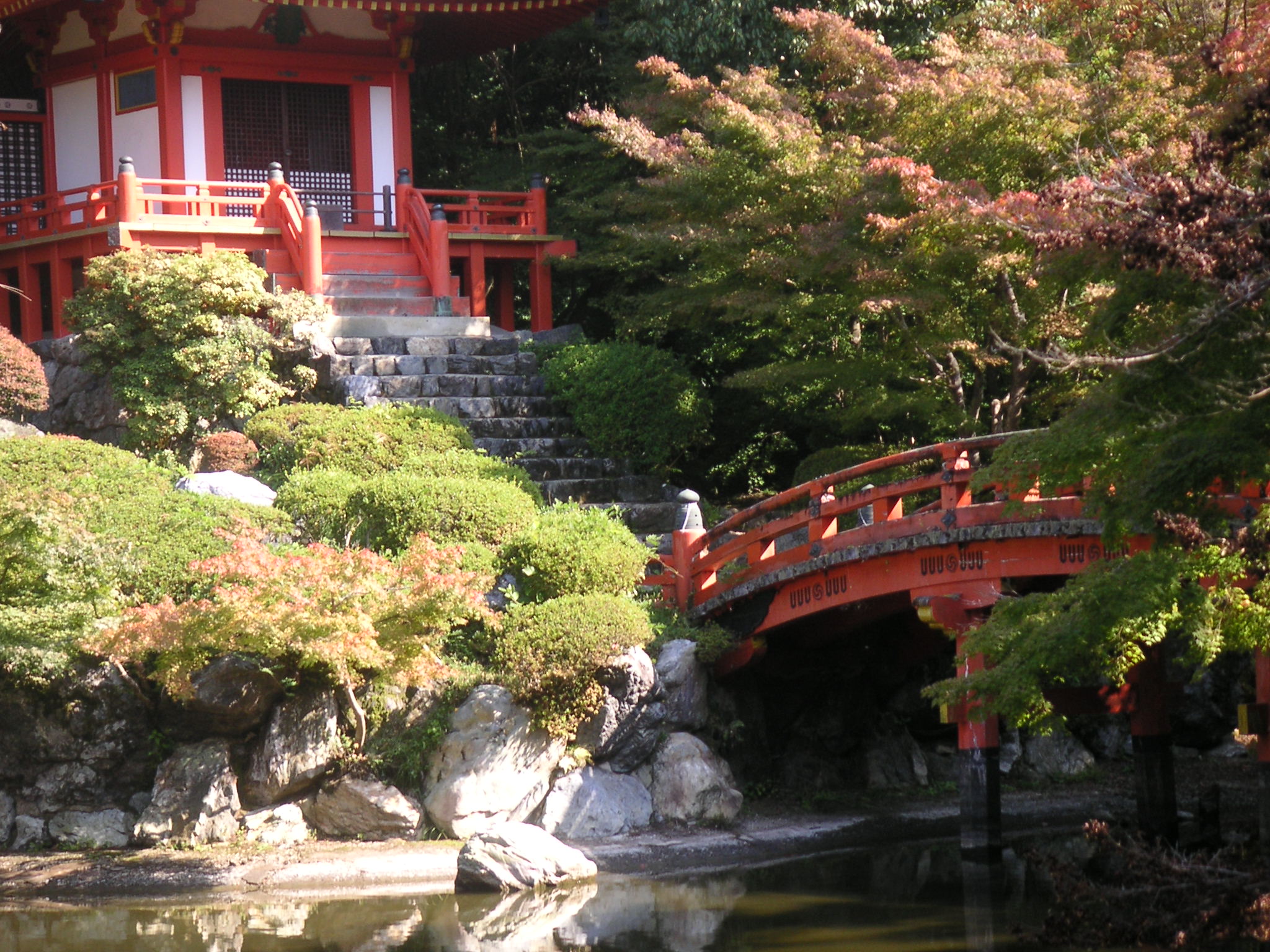Shinto comes in three forms: Shrine Shinto, State Shinto, and Sect Shinto.
Shrine Shinto is most common. It worships kami or Shinto gods, invisible spirit forces that are superior to human beings in both knowledge and power and dwell in a heavenly realm known as the High Plain of Heaven. The first two gods Izanagi and Izanami created the world and brought forth all the other gods, led by the sun goddess (Amaterasu), the moon god (Tsukiyomi), and the wind god (Susa noo). The Japanese emperor is a direct descendent of the sun goddess and all Japanese are in one way or the other related to the numerous deities.
Originally kami were believed to stay in their place of residence unless people cajoled them to visit this world and bring purity, fertility, and good fortune. Having no specific shape of their own, they manifested in temporary vehicles (yorishiro). These vehicles could be trees, boulders, flags, pillars, dolls, puppets, metalworks, jewels, mirrors, or swords. Sometimes kami also descended and temporarily took over the body of a human being in spirit possession. The people taken over were usually women, known as miko, the word still used for female helpers at Shinto shrines. Later kami began to take up more permanent residences on earth in so-called kami bodies (shintai), similar objects as the yorishiro but installed firmly in a small thatched hut surrounded by a fence, the essential element part of any shrine.
Kami are powers of fertility and growth. They can be forces of material nature such as trees, stones, and rocks; dynamic nature such as the sun, moon, wind, and rain; cultivated nature such as rice and food. They can also be representatives of social units, so that every clan, village, and city has their own kami; and superior people, so-called living kami who are gifted to the point as being empowered by divinity—the most famous among them is the Japanese emperor who undergoes a special ceremony (much debated theses days) during which he becomes a god.
Kami representing purity, sin in Shinto is pollution—traditionally associated with blood, dirt, and death, so that Shinto priests would never be involved in funerals. Purity is activated when visiting a shrine—mentally by moral uprightness and a clear conscience as well as the appreciation of beauty, physically through cleanliness and the washing of hands when entering the compound, and ritually by approaching the kami with devotion to give thanks or pray after getting their attention by throwing coins, ringing a bell, and clapping twice.
Shrine Shinto does not have regular services, but people come and pray as their schedule permits. They also obtain omikuji or fortune slips to know their chances in life, write messages on ema or wooden plaques to make their desires known to the gods, and purchase ofude or talismans to protect themselves against sickness, accidents, poverty, and misfortunes. They may also arrange for a special ceremony to be held at the shrine to celebrate a new birth, a teenager’s coming of age, a marriage (Shinto weddings are the most popular), or other major life event. Arrangements are made beforehand, certain fees are charged, offerings of sake, rice, and fruit are made, and the priests perform the ceremony as requested.
State Shinto began in 1868 with the doctrine that the emperor was divine and the Japanese had the right to rule the world. It unified state and religion and was the ideological backbone of Japanese imperialism. It ended in 1945 with the emperor’s renunciation of divinity. Only few institutions still remain, among them Heian jingu in Kyoto and Yasukuni Shrine in Tokyo.
Sect Shinto is a 19th and 20th century phenomenon. The term refers to Shinto-based religious movements that were founded by local peasants, often women, who were possessed by otherwise unknown kami and given otherworld descriptions, prophecies, and healing powers. Some movements remained very small and died out quickly; others, such as Tenrikyo (located in Tenri, S of Nara) and Oomoto kyo (in Kameoka NW of Kyoto), reached large proportions and have widespread networks, both nationally and internationally. Similar movements also arose on the basis of Buddhism, with men experiencing personal visitations from Kannon or other figures and receiving supernatural powers and insights. The international Sokagakkai is one of them; the infamous Aum Shinrikyo another.

Leave a Reply